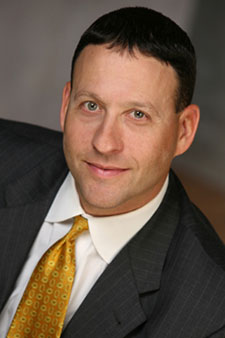Feb. 19, 2015

In my newest series of books about why certain teams win championships in professional sports, I was blown away by the importance of one singular metric that was consistently woven throughout the locker rooms and front offices of every successful organization I researched: chemistry. Sure, talent is important, but to be successful over the long haul requires having a team of people who get along and can work together as a family.
We’re all trying to grow our businesses. That might mean bringing in new employees or interns, which is no easy task. What criteria do you use in assembling your teams? Millennials, Gen-Xers, Boomers, seniors – you’ve got lots of different personalities all thrown into the same pot together, and it can get dicey. In sports, it’s not always about getting the best players, but rather the right players – big difference. The top coaches figure out which players get along well with others and which ones create drama. Do you have any employees who create drama? As Dr. Phil likes to ask, “How’s that workin’ for y’all?”
Employees who cause drama will eventually contaminate your staff. In sports, they are referred to as “team cancers.” Yes, the old cliché rings true: one bad apple will spoil the entire barrel. That’s why we all need to be “long to hire and quick to fire” in the new economy.
In order for you to create the right chemistry on your team, you need to get your people out of the building and onto “neutral turf.” Take them out for a team building exercise somewhere fun (picnic, bar, bowling, etc.) and see who hangs out together. Observe who smiles and laughs and enjoys being around one another. This is what Scotty Bowman did, the coach with the most wins in the history of the National Hockey League. Scotty figured out early in his career that friends like to pass the puck to friends. They will fight for each other, too, which is critical in hockey. He discovered that when people who liked each other and cared for each other played together on the same line, they were less selfish and even found genuine pleasure in watching their pals achieve success.
On his 2002 Stanley Cup-winning Detroit Red Wings roster, Scotty had five Russian players all playing on a line together, as well as five Swedish players all playing on a line together – because he knew that they would have an instant bond and make sacrifices for the good of the team. In a culture steeped in individual statistics and huge egos, this is rare.
We call selfless players “plus players.” In hockey, there is a little-known variable called the plus/minus that just might be the most important statistic in the game. Here is how it works: every time a player is on the ice during a game and his team scores a goal, he’s “plus one.” Every time a player on the ice and the other team scores a goal, he’s a “minus one.” At the end of the season, if a player is plus 50, that means he’s an unselfish team player and he’s going to make millions of dollars. However, at the end of the season, if a player is a minus 50? That means he’s a selfish, one-way player who doesn’t want to sacrifice his body by playing defense – ultimately resulting in either a demotion to the minor leagues, or worse yet, being cut. Ouch!
Bobby Orr, arguably the greatest defenseman of all time with the Boston Bruins, won the plus/minus crown six times. Six! No one else in league history has even won it twice. Bobby was, without a doubt, the most respected player on his team because of his willingness to do the dirty work and be a two-way, plus player. Plus players create good chemistry, build team morale and, most importantly, deter drama. Plus players are infectious in a good way. Minus players, meanwhile, are also infectious, but in a bad way. As leaders, you need to identify and get rid of your minus players. It’s not easy, but they are dead weight and their negativity will eventually consume all of your time and energy.
Here’s the bottom line for your team: You want to fill your roster with plus players – people who are selfless, willing to come in early, stay late and lead by example. This is a hallmark of winning teams. They will have a positive and nourishing influence on the rest of your staff that will ultimately allow you to focus on customer service and, most importantly, profitability. At the end of the day, isn’t that what great team chemistry is all about?
A speaker at NBAA’s 2015 Leadership Conference, Ross Bernstein is a best-selling author of nearly 50 sports books and an award-winning, peak performance business speaker. He has keynoted conferences for Fortune 500 companies on four continents and has been featured on thousands of television and radio programs, including CNN, CBS This Morning, ESPN and Fox News, as well as in the Wall Street Journal, New York Times and USA Today. He has spent the better part of the past 20 years studying the DNA of championship teams, and his mission is to get his audiences to think differently about what it will take to raise their games to the next level.


 International Business Aviation Council Ltd.
International Business Aviation Council Ltd.